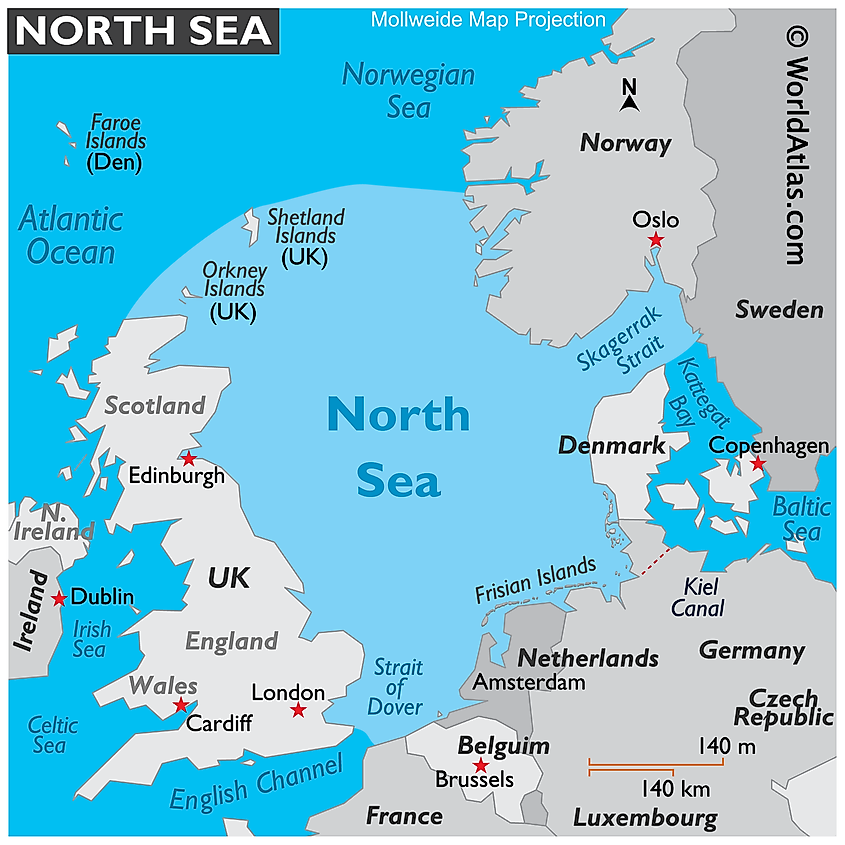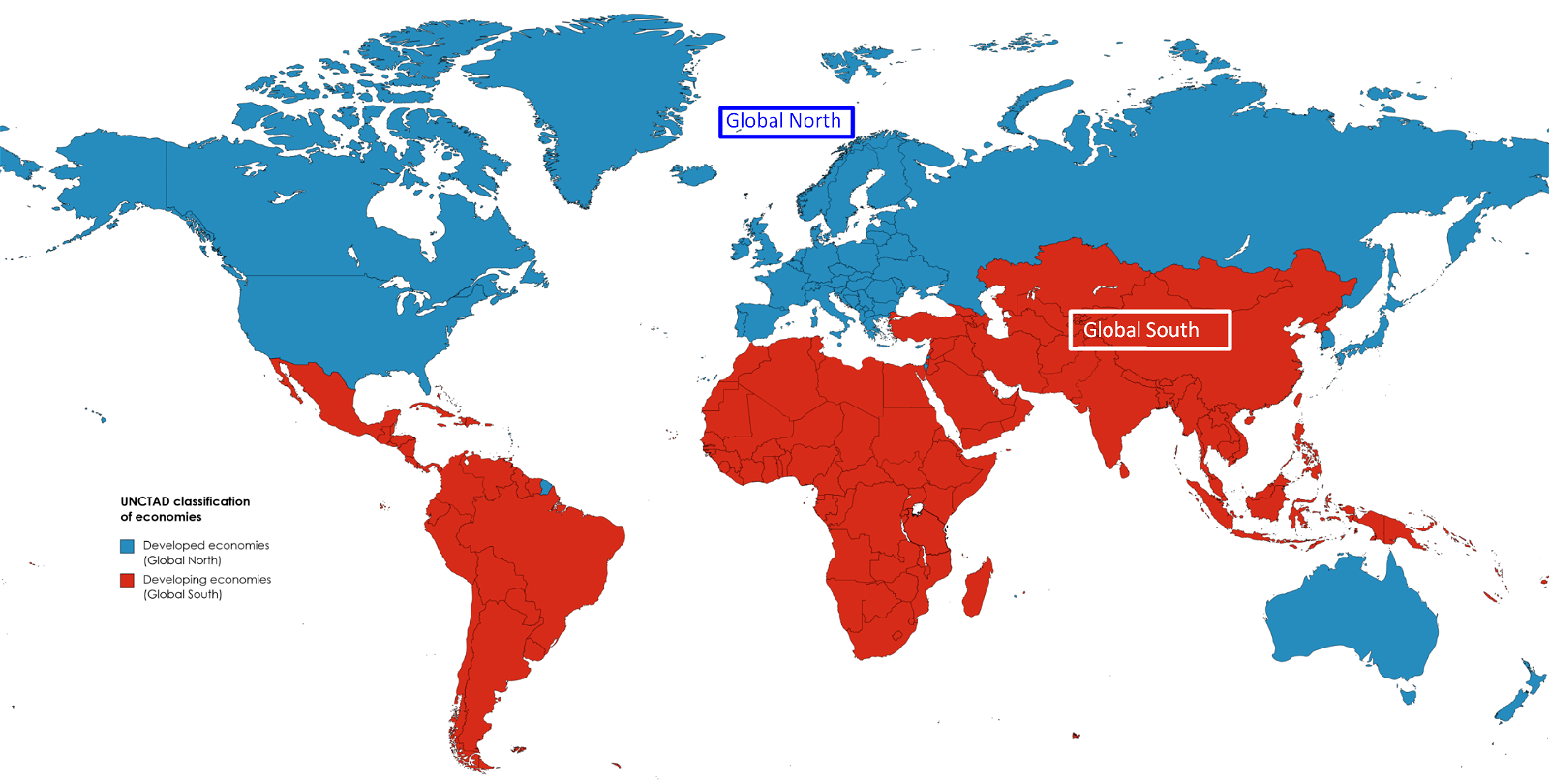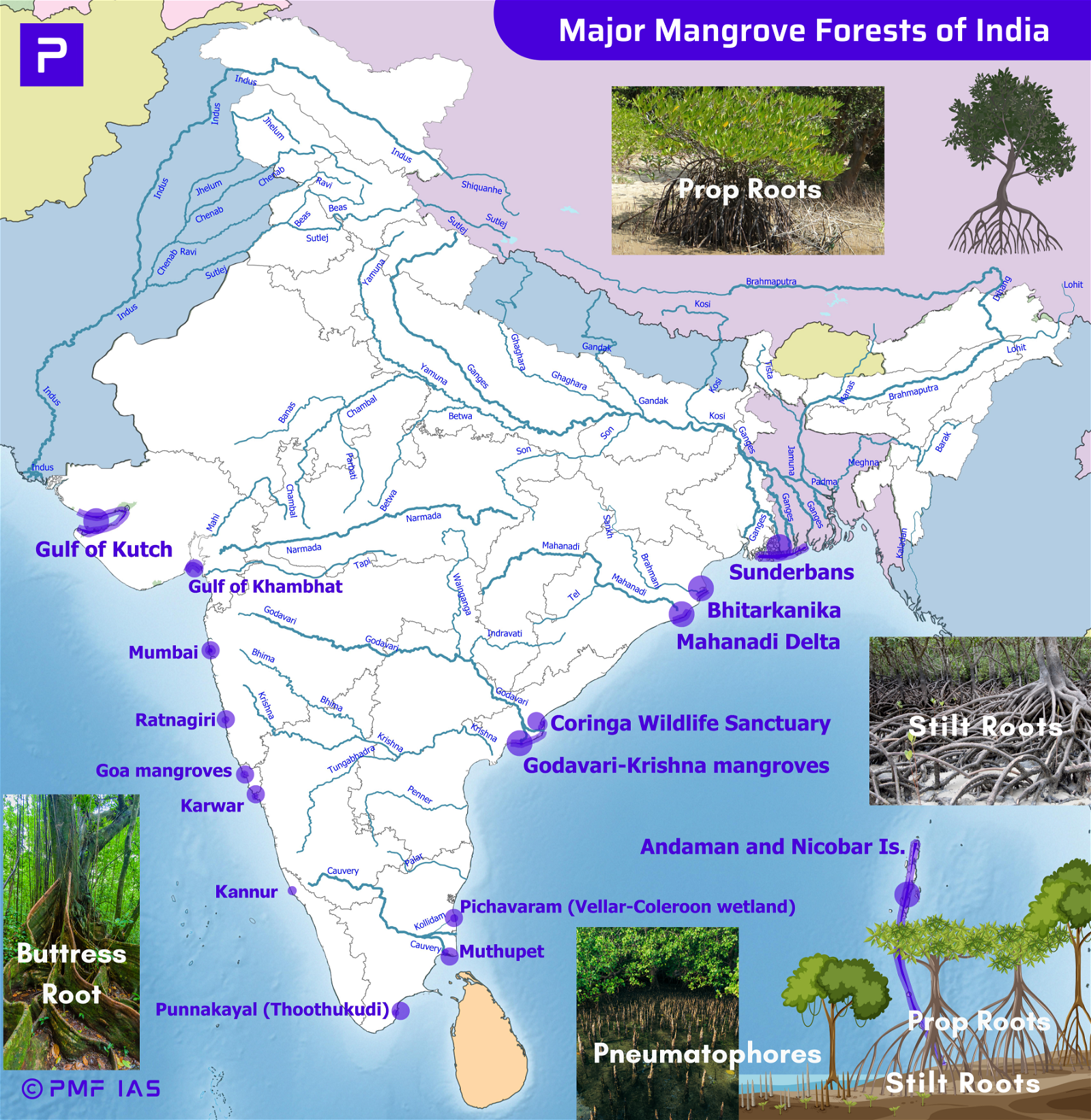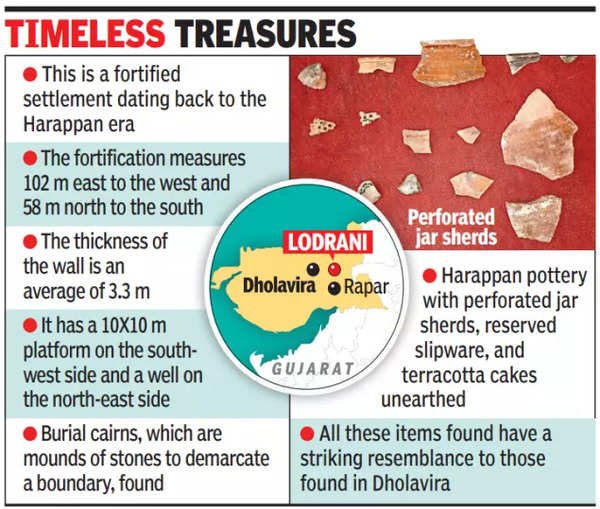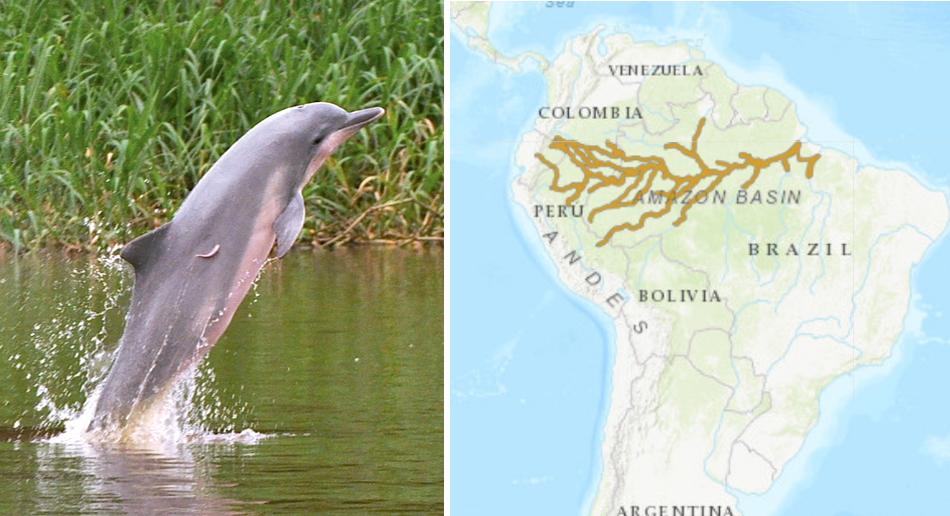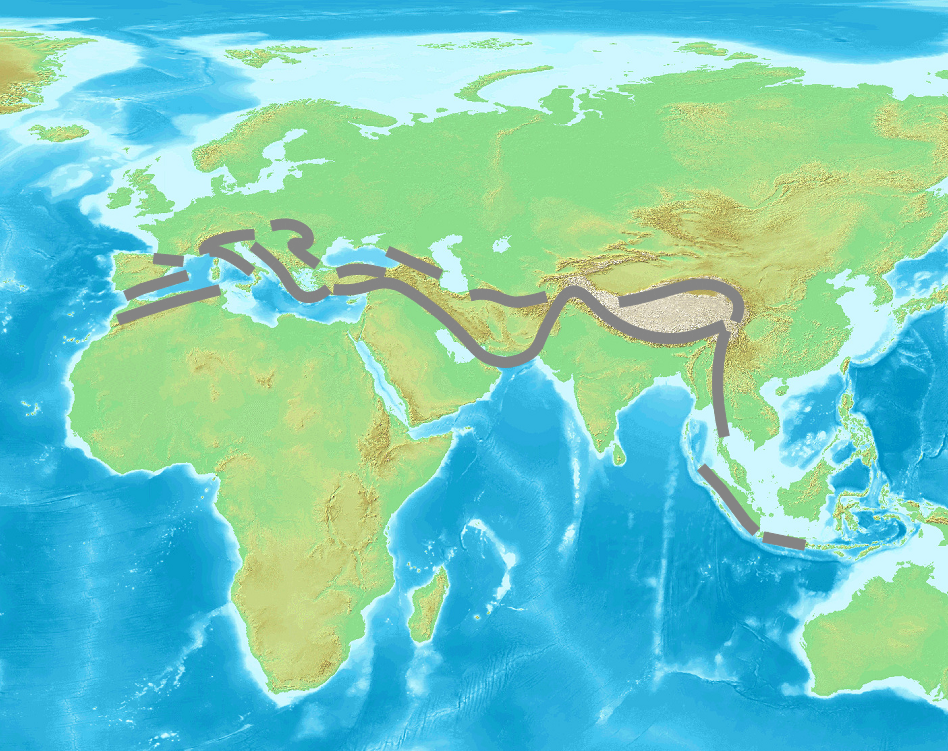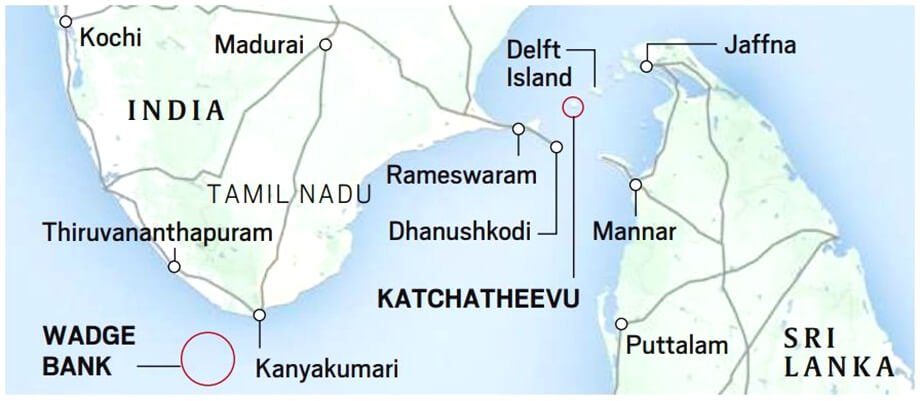
Current Affairs August 22, 2023: Drilling in the North Sea, BRICS, Yasuni National Park, Manipur Violence, Polymerase Chain Reaction, TAPAS UAV, Tomahawk Missile, Kashmir Stag
Subscribers of "Current Affairs" course can Download Daily Current Affairs in PDF/DOC
Subscribe to Never Miss an Important Update! Assured Discounts on New Products!
Must Join PMF IAS Telegram Channel & PMF IAS History Telegram Channel
{GS1 – Geo – EG – Oceanic Resources – 2023/08/22} Drilling in the North Sea
- Context (TH): U.K. plans for new fossil fuel offshore drilling in the North Sea.
- North Sea Transition Authority (NTSA), responsible for regulating oil, gas, and carbon storage industries, is expected to release the first of the new licences in autumn.
North Sea
|
Offshore Drilling
- Offshore drilling refers to the process of extracting oil and natural gas from beneath the seabed in oceans, seas, and other bodies of water.
- Generally, it refers to drilling activities on the continental shelf, though the term can also be applied to drilling in lakes, inshore waters, and inland seas.
History of Offshore Drilling
- Early Attempts and Innovations (19th Century): In the 1830s, the first offshore wells were drilled in the shallow waters of the Grand Lake St. Marys in Ohio, USA.
- First Submerged Oil Well: The first submerged oil well is drilled in the Gulf of Mexico in 1896.
- Transition to Fixed Platforms (Early to mid-20th Century): In the early 20th century, offshore drilling shifted to using fixed platforms constructed in shallow waters.
- Expansion into Deeper Waters (Mid-20th Century): As technology improved, offshore drilling expanded into deeper waters. This expansion led to discoveries in the North Sea, the Gulf of Mexico, and other regions.
1958 Geneva Convention on the Continental Shelf
United Nations Convention on the Law of the Sea (UNCLOS)
International Seabed Authority (ISA)
|
Concerns Associated with Offshore Drilling
Oil Spills
- Oil spills can occur during drilling, production, or transportation.
- They can have a devastating impact on marine life and coastal ecosystems.
- E.g., the Deepwater Horizon oil spill in the Gulf of Mexico in 2010.
Water Pollution
- Offshore drilling can also pollute the water with chemicals and other pollutants.
- This can harm marine life and make the water unsafe for swimming and fishing.
Noise Pollution
- Offshore drilling can produce a lot of noise, which can disturb marine animals.
- This can disrupt their feeding, breeding, and migration patterns.
Habitat Destruction
- Offshore drilling can destroy marine habitats, such as coral reefs and seagrass beds.
- These habitats are important for a variety of marine life, and their destruction can have a cascading impact on the ecosystem.
Safety Risk
- Offshore drilling is a complex activity. There is a risk of accidents, injuries, and fatalities.
{GS2 – IR – Groupings – 2023/08/22} BRICS
- Context (TH): PM Narendra Modi is set to visit South Africa for the BRICS Summit.
- BRICS is a grouping of the world economies of Brazil, Russia, India, China, and South Africa formed in 2010.
Evolution of BRICS
- In 2001, British economist Jim O’Neill coined the term ‘BRIC’, standing for the initials of four emerging economies at the time – Brazil, Russia, India, and China.
- The leaders of BRIC (Brazil, Russia, India, and China) countries met for the first time in St. Petersburg, Russia in July 2006.
- In September 2006, the group was formalised as BRIC.
- The first formal meeting was held in 2009 in Russia. South Africa joined in 2010, expanding it to ‘BRICS’.
- Now, BRICS includes these five economies, representing:
- 42% of the world’s population
- 30% of the world’s territory
- 23% of global GDP
- 18% of world trade.
Need of BRICS (Alternative mechanism for global governance)
- The unrepresentative character of global governance institutions has led to their failure.
- A more inclusive system like BRICS can fill such institutional vacuums.
- BRICS and SCO could ignite a genuine conversation on making global governance more representative and inclusive.
Rationale behind creating BRICS
- To counter the dominance of European and Western countries at international forums and institutions, such as the United Nations.
- To represent global south at the centre of international agenda-setting.
BRICS agenda
- The chairmanship rotates among the group annually.
- The Chair has to set the agenda, priorities, and calendar for the year.
- This year, the agenda of the 15th Summit is ‘BRICS in Africa: Partnership for Mutually Accelerated Growth, Sustainable Development and Inclusive Multilateralism’.
Expansion of BRICS
- Over 40 countries have formally or informally expressed interest in joining an expanded BRICS.
- It reflects the anger in the global South countries about their place in the world.
- Given its size, economic influence, spread of the Belt and Road Initiative, and diplomatic bandwidth, China will influence an expanded BRICS.
- In an attempt to create a multipolar world and alternative mechanisms for global governance, India should not boost the rise of China and the China-centric world order.
Issues
- BRICS has not been able to steer the global economy in any significant manner.
- It doesn’t really want to make economic agreements within its members.
- Its historical capability to influence global geopolitics is overestimated.
- As a bloc, it is hardly an attractive investment destination.
Importance for India
- The platform could be a means of establishing its larger efforts to represent the Global South.
- The Summit could move things along from a diplomatic perspective.
- This is the first in-person summit since the military standoff with China at the Line of Actual Control began in 2020. This meeting could resolve the LAC situation.
- Just over two weeks after the BRICS summit, India will host the G20 summit, and India will want to ensure full attendance by the leaders including all BRICS members.
|
India and Global Groupings
How can India be a part of the Quad, G-20, BRICS, SCO and global South at the same time?
- India’s active participation in non-western multilateral forums such as BRICS, SCO and the global South must also be seen as India’s response to the undemocratic and inequitable governance structures of institutions such as the International Monetary Fund, the World Bank and the UNSC.
- India’s objective is not to create or belong to an anti-U.S./West bloc either.
- Developmentally, historically, and geographically, India belongs to BRICS, SCO, and the global South.
- But India does not only belong to them. Structurally and aspirationally, the G-20, G-7, Quad and the like are where India is headed.
New Development Bank (NDB/BRICS Bank)
Membership
Contribution and Voting
|
{GS3 – Envi – Conservation – 2023/08/22} Yasuni National Park
- Context (TH): In a historic decision, Ecuadorians voted against the oil drilling of Yasuni National Park, a protected area in the Amazon rainforest of Ecuador.
- Yasuni National Park is located between the Napo and Curaray Rivers.
- Yasuni National Park is largest national park in Ecuador
- It is also a UNESCO World Heritage Site.
- It is one of the richest biodiversity hotspots in the world.
- Yasuni National Park is home to two uncontacted tribes, Tagaeri and Taromenane.
- The park is threatened by oil drilling and deforestation.
- Conservation Status: IUCN Category II protected areas
|
|
Tagaeri and Taromenane
- Tagaeri and Taromenane are two indigenous groups that live in voluntary isolation in the Yasuni National Park of the Ecuadorian Amazon rainforest.
- They are distinct subgroups of the Waorani people.
- These groups have chosen to avoid contact with the outside world and have maintained traditional ways of life, living in remote and often inaccessible areas.
Reason for Voluntary Isolation of Tagaeri and Taromenane
- Both the Tagaeri and Taromenane have experienced conflicts and violence when in contact with the larger Ecuadorian society, including the oil industry, loggers, and settlers.
- These conflicts have likely contributed to their decision to live in isolation as a means of protection.
Amazon Rainforests
Tropical Rainforests
Amazon River
|
{GS3 – IS – Ethnic Conflicts – 2023/08/22} Manipur Violence
- Context (TH): Manipur Assembly failed to hold a Special Session to discuss the ongoing violence.
Geography of Manipur
- The state consists of Imphal Valley and surrounding hills.
| Imphal valley | The hills |
|
|
Manipur’s border
- Manipur is bordered by the Indian states of Nagaland to the north, Assam to the west, and Mizoram to the southwest and by Myanmar (Burma) to the south and east.

Fencing of Myanmar-Manipur border
- Fencing of 10 km of the Myanmar-Manipur border has been completed and the tender for 80 km of fencing has been completed while a survey in the remaining areas is under way.
Manipur’s ethnic composition
-
Non-tribal people
- Meitei community accounts for 53% (majority) of Manipur’s population.
- They are currently categorised as Other Backward Classes (OBC) or SCs, and many of them have access to benefits associated with the SC, OBC or EWS status.
- The majority of the Meiteis are Hindus, followed by Muslims.
- The language of the Meitei people (Manipuri) is included in the Eighth Schedule of the Constitution.
-
Tribal people
- Tribes inhabited in the valley are mostly Kuki, Chin, Mizo, Zomi, and Naga.
- Nagas and Kukis constitute 40% of the population.
- The 33 recognised tribes, broadly classified into ‘Any Naga tribes’ and ‘Any Kuki tribes’ are largely Christians.
The demand of Meiteis for ST status
- The demand for ST status for Meiteis began in 2012.
- In 2013, The Union Ministry of Tribal Affairs sent a letter to the Manipur Government and asked them to send recommendations related to the community’s request for inclusion in the ST list.
- In 2023, The Manipur HC:
- Noted that the recommendation from the State government had been pending for 10 years now.
- Asked the Manipur State government to send a recommendation to the Centre regarding the demand to include the Meitei community in the STs list.
STDCM’s Demand
- According to the Scheduled Tribe Demand Committee of Manipur (STDCM), Meiteis were recognised as a tribe before the merger of the State with the Union of India in 1949, and they lost this tag when the Constitution (Scheduled Tribes) Order, 1950 was drafted.
- They argued that the ST status is needed to “preserve” the community and “save the ancestral land, tradition, culture, and language” of the Meiteis.
- The STDCM also said the Meiteis needed constitutional safeguards against outsiders, stating that the community has been kept away from the hills while the tribal people can buy land in the Imphal Valley.
|
Reasons for the violence
- On May 3, violence began because a student group (ATSUM) protested a decision by the Manipur HC asking Manipur State government to send a recommendation to the Centre regarding the demand to include the Meitei community in the Scheduled Tribes (STs) list.
- According to Union Home Ministry, three primary reasons for the violence are:
- Legacy issues
- Infiltration from Myanmar
- Manipur HC order
- Role of illegal migrants from Myanmar: The Centre and Manipur government told the SC that the genesis of ethnic violence in the state was the crackdown on illegal Myanmar migrants.
Why are tribal groups against ST status for Meiteis?
- The tribal groups feel the ST status to the Meiteis would:
- Lead to loss of job opportunities.
- Allow Meiteis to acquire land in the hills.
- Push the tribals out.
- On May 4, as the violence escalated between the Meiteis and the tribes of the hill districts, the Centre invoked Article 355 of IC.
Article 356 of IC
|
Hill Areas Committee (HAC)
- The Hill Areas Committee (HAC) of the Manipur legislative assembly passed a resolution opposing the High Court’s order.
- HAC is a Constitutional body. It was established under Article 371C.
- All 20 MLAs from the hill districts are members of the committee.
- The HAC is empowered to monitor legislation and administration for the hill areas.

Procedure for the inclusion of a community in the ST list
|
Manipur and AFSPA
Manipur and Panchayati Raj Institutions (PRIs)Article 243M of the IC
|
Special session of Manipur Legislative Assembly
- On August 4, 2023, the State Cabinet recommended the Governor to summon the session of the Manipur Legislative Assembly.
- The Governor did not issue any notification to convene it.
- Under Article 174 of IC:
- The Governor has the power to Summon or Prorogue the Houses or House of Legislature of the state.
- There should not be more than six months of gap between two successive sessions.
|
SC Judgement
- In Nabam Rebia versus Deputy Speaker case, the Constitution Bench judgment of the SC held that:
- The Governor cannot employ his ‘discretion’ and should strictly abide by the “aid and advice” of the Cabinet to summon the House.
- The discretionary power of the Governor is extremely limited and can be reviewed by the judiciary.
- The Governor’s discretionary powers are limited to specified areas like:
- Giving assent or withholding/referring a Bill to the President
- Appointment of a Chief Minister
- Dismissal of a government which has lost confidence but refuses to quit, etc.
{GS3 – S&T – Biotechnology – 2023/08/22} Polymerase Chain Reaction
- Context (TH): Scientists can’t create a virus from scratch and for this, they have to rely on nature.
- So, scientists take samples from patients and make more copies of the genetic material of the virus using a technique called a polymerase chain reaction.
- They use it to understand the sequence of bases that make up its genetic material.
Virus
- A virus is a microscopic infectious agent that consists of genetic material (either DNA or RNA) enclosed in a protein coat.
- It can infect living organisms, including humans, animals, plants, and even microorganisms like bacteria.
- It is an acellular or non-cellular organism, meaning it cannot carry out cellular functions like metabolism, growth, and reproduction on its own.
- A virus can self-replicate inside a host cell. The infected cells may produce thousands of new copies of the original virus at an extraordinary rate.
|
Comparison of DNA virus and RNA virus |
|
|
DNA virus |
RNA virus |
| Genetic material is DNA | Genetic material is RNA |
| Mostly double-stranded | Always single-stranded |
| Mutation rate is lower | Mutation rate is higher |
| DNA replication takes place in the nucleus (refer image below) | RNA replication takes place in the cytoplasm (refer image below) |
| DNA viruses are stable | RNA viruses are unstable |
|
|
|
Necessity of Creating a Virus from Scratch
To study the basic biology of viruses
- By understanding how viruses work at the molecular level, one can learn how they infect cells, replicate, and cause disease.
- This knowledge gives insights into fundamental cellular processes and disease mechanisms which helps in developing new antiviral drugs.
To create new vaccines
- Traditional vaccines work by exposing the body to a weakened or inactive form of a virus, which helps the body develop immunity to the virus.
- By building a virus from scratch, scientists can create new types of vaccines which do not contain the weakened or inactive form of a virus.
- Such new vaccines are more effective and safer than traditional vaccines.
To develop gene therapies
- Viruses are used as vectors for delivering therapeutic genes to target cells in gene therapy.
- By modifying the genetic material of viruses, scientists can create safe and efficient vectors for delivering genes to treat genetic disorders or other diseases.
To create new bioweapons
- A bioweapon is a biological agent, such as a virus, that is deliberately used to cause harm to humans or animals.
- The ability to build a virus from scratch could make it easier to develop bioweapons.
To study potential biosecurity and biosafety risks
- Building a virus from stretch helps to better understand how viruses could evolve, become more dangerous, or evade countermeasures.
Polymerase Chain Reaction (PCR)
- Polymerase Chain Reaction (or PCR) is a molecular biology technique that is used to amplify or make multiple copies of a specific segment of DNA.
- PCR uses the ability of the enzyme, DNA polymerase (enzymes that make copies of DNA) to synthesize new strands of DNA in a complementary manner to the offered template strand.
- It has revolutionized various fields, including genetics, forensics, medical diagnostics, and biotechnology.
- It was developed in 1983 by Kary B. Mullis, an American biochemist who won the Nobel Prize for Chemistry in 1993 for his invention.
Process of Polymerase Chain Reaction
- The PCR reaction is carried out in a thermocycler (which heats and cools the solution in a controlled manner).
- The steps of the PCR reaction are as follows:
- Denaturation: The DNA is heated to a high temperature (95-98°C) to separate the two strands of the DNA molecule.
- Annealing: The temperature is lowered to about 55°C to allow the primers to bind to the DNA template. Primers are short, single-stranded DNA sequences that are used to bind to the ends of the target DNA sequence.
- Extension: The temperature is raised to a moderate temperature (72-75°C) to allow the DNA polymerase to synthesize new DNA strands complementary to the DNA template.
- These steps are repeated 20-30 times, resulting in billions of copies of the DNA template.
Reverse Transcription-Polymerase Chain Reaction (RT-PCR)
- RT-PCR is a type of PCR technique that is used to amplify RNA.
- RT-PCR is used in case of RNA virus.
- It is a two-step process:
- First step: RNA is converted into DNA using reverse transcriptase (an enzyme converts the RNA into complementary DNA or cDNA).
- Second step: PCR technique is used to amplify the DNA.
- E.g., In case of the SARS-COV-2 (COVID-19) virus, the RT-PCR technique was used.
Quantitative PCR (qPCR) or Real-time PCR
- qPCR or real-time PCR is a type of PCR that allows for the quantification of the amplified DNA in real-time.
- This is done by using a fluorescent dye or probe that binds to the amplified DNA.
- The fluorescence of the dye or probe increases as the amount of amplified DNA increases.
Advantages of Real-time PCR over Conventional PCR
- Accurate quantification
- Reduced risk of contamination
- Ability to monitor the amplification process in real-time
Uses of Real-time PCR
- Viral detection: RT-PCR is used to detect viruses by amplifying the viral DNA in real time. This is a common method for diagnosing viral infections, such as HIV and SARS-CoV-2.
- Gene expression analysis: RT-PCR can be used to measure the levels of specific genes in a sample. This can be used to study gene expression, such as in cancer research.
- Mutation detection: RT-PCR can be used to detect mutations in genes. This can be used to diagnose genetic diseases, such as sickle cell anemia.
{GS3 – S&T – Defence – 2023/08/22} TAPAS UAV
- Context (IE I HT): Tapas Unmanned Aerial Vehicle (UAV) of the DRDO crashed near a village in Karnataka’s Chitradurga.

- The Tactical Airborne Platform for Aerial Surveillance-Beyond Horizon-201 or TAPAS BH-201 is a medium-altitude long-endurance.
- UAV being developed in India by the Aeronautical Development Establishment.
- It was designed on the lines of General Atomics MQ-1 Predator.
- It was formerly referred to as Rustom-II until 2016.
|
Features
- The medium-altitude, long-endurance drone has an impressive flight endurance of several hours and successfully completed its maiden flight in November 2016.
- The platform can operate at an altitude of 28,000 ft and has an endurance of 18 hours.
- It also has night flying capability. It is an indigenous solution to the tri-services Intelligence, Surveillance, Target Acquisition And Reconnaissance (ISTAR) requirements.
- It can carry a maximum payload of 350 kg.
- The UAV can also be used for artillery fire corrections and battlefield post-strike assessment.
- India currently does not have any drones in the HALE (high altitude long endurance) category.
{GS3 – S&T – Defence – 2023/08/22} Tomahawk Missile
- Tomahawk cruise missile is a long-range, precision-guided weapon that can be launched from ships or submarines to strike targets on land.
- The Tomahawk is designed to fly at low altitudes, making it difficult to detect on radar.
- It uses a variety of guidance systems including inertial navigation, terrain-matching, and GPS.
- The Tomahawk has a range of up to 2,400 kilometres and an Accuracy of about 5 meters. It can carry either conventional or nuclear warheads.
- It is powered by a solid propellant during its launch phase and a turbofan engine for sustained flight.
- It is capable of twisting and turning like a radar-evading fighter plane, making it difficult to intercept.
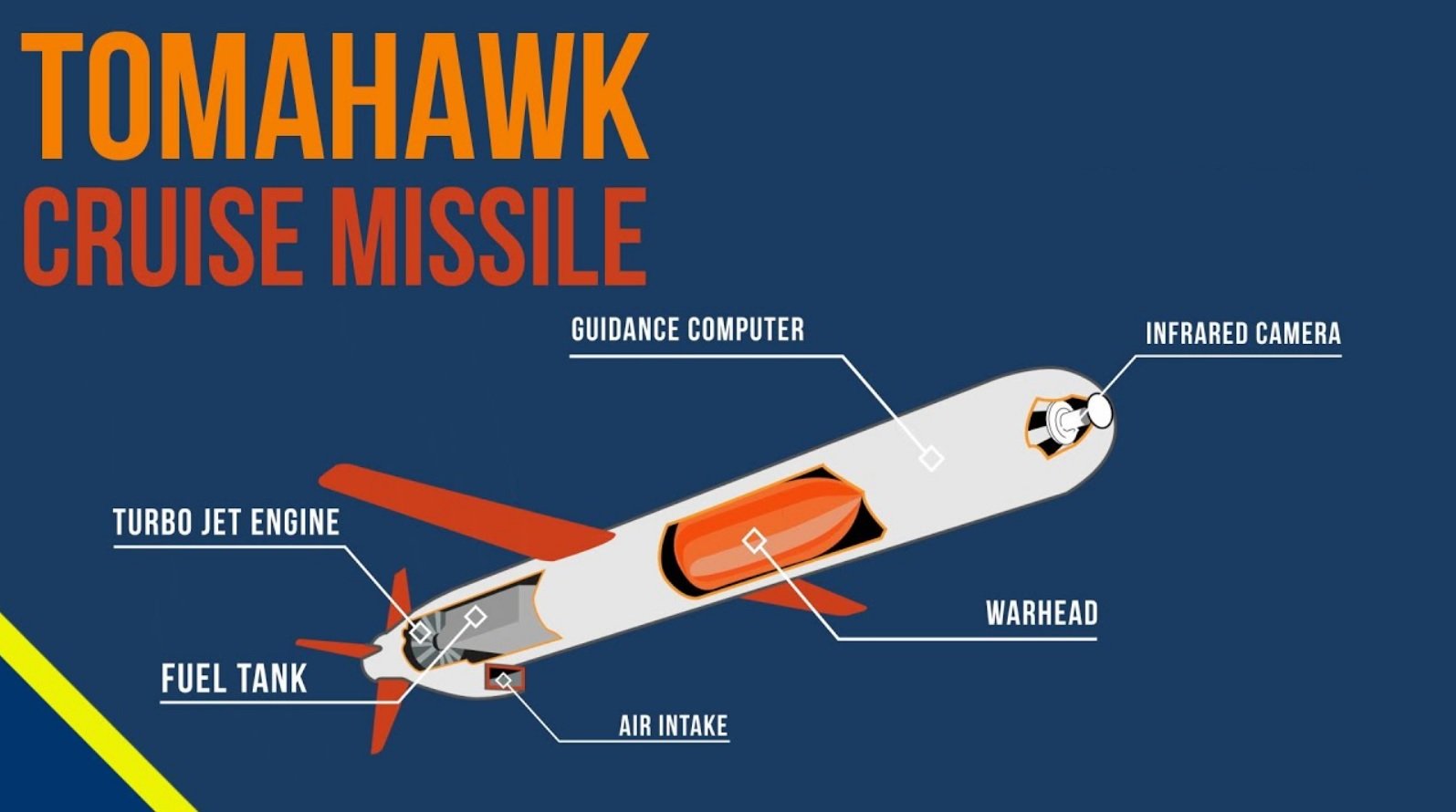
{Prelims – Envi – Misc – 2023/08/22} Vegetated Canopies
- Context (IE): Vegetated canopies for creating green spaces in urban Spain
- Vegetated canopies are vegetated awnings that have been anchored to the facades of surrounding buildings.
- They mimic natural canopies found in forests and various plant species.
|

How the Vegetated Canopies are Formed?
- The awnings are laid down using the specific geotextile substrate or material.
- An irrigation system is installed at the highest side, from where the water falls by gravity, soaking the entire substrate.
- The seed mixture is then projected onto the geotextile.
- In addition to water, fertilizer is also used.
- After a few months, the vegetated canopy is formed.
Advantages of Vegetated Canopies
- Provides shade
- Mitigates Urban Heat Island Effect
- Absorbs greenhouse gases
- Reduces noise pollution
|
{Prelims – Envi – Species – 2023/08/22} Kashmir Stag/Hangul
- Context (HT): After two years, the unique Kashmir stag (Hangul) the state animal of J&K, has again shown a marginal increase in its population.
- However, if compared to the numbers of the past two decades, when the census exercise started, the rare animal’s population has increased by around 50%


- It is a subspecies of Red Deer which is native to India.
- Habitat: Dense riverine forests, high valleys, and mountains of the Kashmir valley and northern Chamba in Himachal Pradesh.
- In Kashmir, it is found primarily in the Dachigam National Park where it receives protection.
- Threat: habitat destruction, over-grazing by domestic livestock, and poaching.
Dachigam National Park
|
{Prelims – India PIN – 2023/08/22} Kashmir’s Tulip Garden
- Context (TI I HT): Kashmir’s Tulip Garden has been included by the World Book of Records for being Asia’s largest Tulip Garden with 1.6 million plants of 68 varieties.
- Srinagar’s Tulip Garden is on the foothills of the Zabarwan mountain range at an altitude of 5,600 ft, overlooking the Dal Lake in Siraj Bagh.
- The garden was opened in 2007 with the aim to boost floriculture and tourism in the Kashmir Valley.
- The Tulip Festival is an annual Spring festival to increase tourism by the Government of J&k.

Zabarwan Range
|





![PMF IAS Environment for UPSC 2022-23 [paperback] PMF IAS [Nov 30, 2021]…](https://pmfias.b-cdn.net/wp-content/uploads/2024/04/pmfiasenvironmentforupsc2022-23paperbackpmfiasnov302021.jpg)
